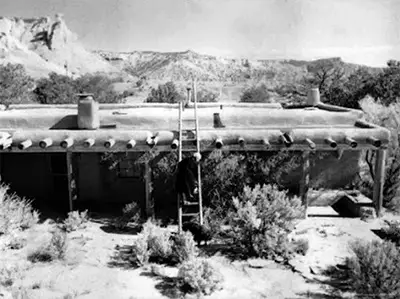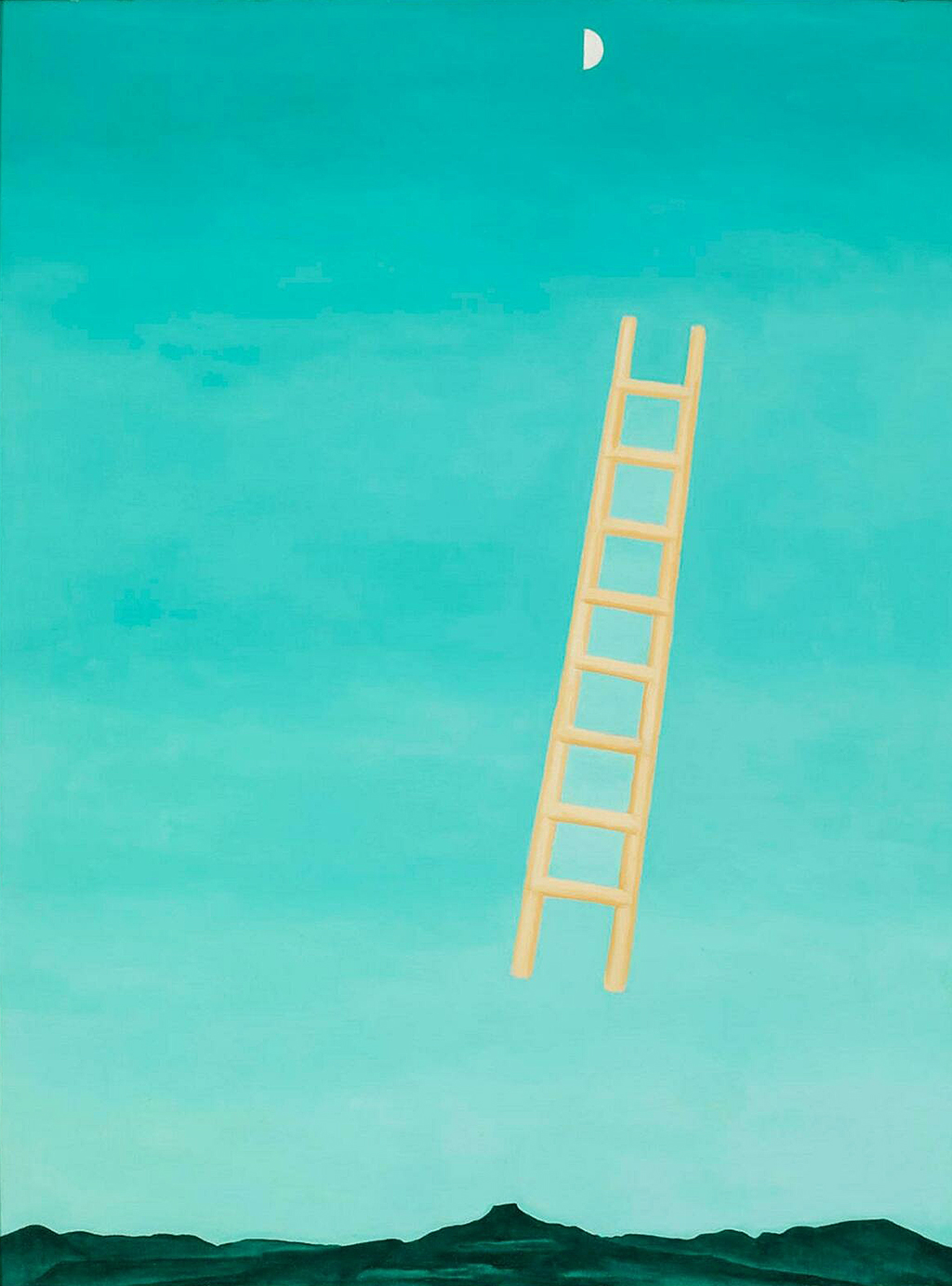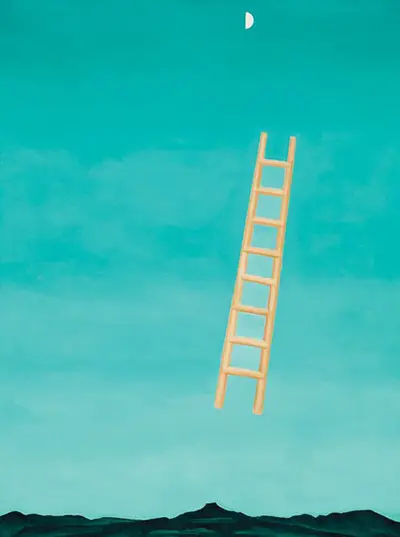Cosmology has been the inspiration for artist's work for thousands of years. The earliest forms of art include suns and moons, often in a religious or spiritual symbolism. Abstract art has also made use of the simplistic lines and shapes of the items, such as Joan Miro with his Red Sun painting, and also Dog Barking at the Moon. O'Keeffe continues this in some of her own work, such as with Ladder to the Moon as shown here. This particular painting bears clear resemblance to a photograph of the artist and may have served as her study guide for it. The photograph was of her in Ghost Ranch and the surroundings match with what we see in this painting. In Pueblo culture, which she is known to have studied at various times in her life, the ladder is used to symbolise the link between the native Pueblos and cosmic forces above.
This group of people also inspired photographer Ansel Adams in some of his work, where he was drawn by the style of their housing. The painting may represent the path of life in a similar way to The Tetons and the Snake River photograph by Ansel Adams. Both of these artists are well represented within their native USA, with very few of their artworks to be found outside of those boundaries. They also both have their own specialist museums, which serve multiple purposes, such as protecting their legacies as well as encouraging further research into their respective careers. O'Keeffe herself is also currently benefiting from the increased efforts in telling the stories of female artists within major exhibitions, with their being an acceptance that they have not been treated fairly up to now. She was already exceptionally famous, but this just helps to increase interest in her career.
This simple composition features a clear sky, in a blue-green tone with a small landscape foreground at the bottom of the canvas. It appears to be a rocky setting, but is left small so as to avoid taking too much attention. It is there more for persective than anything else, to ensure that we understand the balance of land and sky within this painting. We find the moon, half concealed, at the very top of the artwork, with the ladder dominating the central area. It is in a light brown colour, without any particularly unusual features. The sky showing through the gaps in the rungs of the ladder are a slightly lighter tone than is the rest of the night sky. It is a calming artwork, though one is immediately questioning what they are seeing - is there a symbolic meaning to this, or it merely an abstract version of something the artist was looking at? Thankfully, these questions have been answered by others in the years that have passed since the work was first unveiled in 1958.
"...The images are all of transition: the ladder itself implies passage from one level to another; the moon is cut neatly in half by the bold slicing light, halfway between full and new; and the evening sky is in flux, still pale along the line of the horizon, shading into deep azure night at the top of the canvas..."
Roxanna Robinson
 Find here a photograph which illustrates perfectly the inspiration used by O'Keffee to produce the painting that we are discussing. Although a black and white photograph, we can understand the desert-like surroundings and can imagine the bright tones that the artist would have been living around whilst here. She was heavily involved in photography and also used inspiration from that art form for her own paintings, such as in using over-sized depictions of flowers which was probably brought about through reproducing photos from negatives. Her husband was also involved in this art form, whilst helping her out by selling many of her works. He was an artist himself, so could understand her qualities and also was able to promote her paintings by drawing attention to her own unique qualities.
Find here a photograph which illustrates perfectly the inspiration used by O'Keffee to produce the painting that we are discussing. Although a black and white photograph, we can understand the desert-like surroundings and can imagine the bright tones that the artist would have been living around whilst here. She was heavily involved in photography and also used inspiration from that art form for her own paintings, such as in using over-sized depictions of flowers which was probably brought about through reproducing photos from negatives. Her husband was also involved in this art form, whilst helping her out by selling many of her works. He was an artist himself, so could understand her qualities and also was able to promote her paintings by drawing attention to her own unique qualities.
Ladder to the Moon from 1958 can be found in the permanent collection of the Whitney Museum of American Art in New York, USA. They have an extensive array of items from the careers of Arshile Gorky and Edward Hopper to enjoy, as well as the likes of Mark Rothko, Barnett Newman and Jackson Pollock. American art had followed in the footsteps of European art for many centuries until finally starting to contribute highly notable artists of their own, particularly within the 20th century. As well as talented artists, they would also begin to influence new movements and the overall direction of contemporary art, when previously they had been following on the heels of Europeans, drawing of their ideas rather than providing their own innovations and starting to influence in the opposite direction. If you are looking to see a specific piece in person there, please check ahead that it will be on display, as all collections are rotated frequently in order to allow the public to see as much of the selection available as possible.

